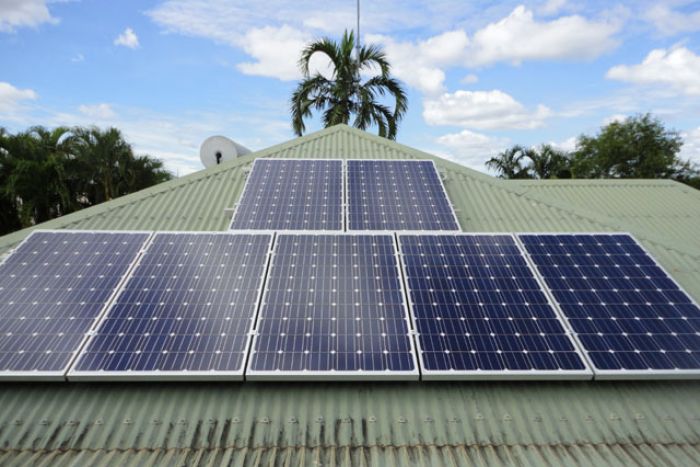Benson de, like many other small cities and towns, isn’t known for renewable energy. With a population of just over 5,000 people, it is best known for its railroad history.
However, this southeastern Arizona city in Cochise County with its abundant sunshine and lots of vacant land available at a good price, is an ideal spot for developing solar power.
Arizona Generation and Transmission, a utility co-op of 10 smaller utilities from Arizona, California and Nevada, decided it was time to start developing. So it opened the Apache Solar Project, its first utility-scale solar facility, this fall.
About a 30-minute drive from downtown Benson, the new 20-megawatt solar farm is comprised of more than 77,000 solar panels arranged in several columns. Like most newer solar facilities, the panels are designed to rotate throughout the day and continually face the sun.
With each of Arizona G&T’s co-ops signing up for a portion of the power, the facility is now bringing renewable energy to thousands of rural Arizona consumers.
This solar development just across the street from the Arizona G&T’s main coal-fired power plant is small compared to some of the major solar farms in Yuma and Maricopa County, but it is now one of the largest G&T operated solar facilities in the country, according to data from the National Rural Electric Cooperative Association, which represents more than 900 not-for-profit, consumer-owned electric cooperatives.
Barry Brown, executive director of engineering and transmission maintenance, said the co-op wasn’t initially planning on making their new facility as big as 20 megawatts, but because of good pricing, investing in a larger project made sense.
“We own several thousand acres of property here, and we’ve been looking for ways to provide renewable energy to our members,” Brown said.
The members expressed a desire to become more involved in renewables, said Brown, so it was a collaborative effort.
Jim Matheson, CEO of the National Rural Electric Cooperative Association, said there are few instances in which rooftop solar investments are beneficial for utilities. The economy of scale involved in larger solar plants makes them a better buy.
“Utility-scale (solar installations), from an economics standpoint, are always going to beat rooftop,” Matheson said. “And not just a little bit, a factor of 2-1. It depends in a utility service territory on the opportunity for consumers to realize benefits from solar or not. Some utilities have said we’re going to move ahead with this, and others won’t.”
The 20 megawatts coming from the solar facility adds to more than 600 megawatts of traditional power capacity from the coal plant. While solar power won’t replace traditional fuel for Arizona G&T in the near future, projects such as these help G&T’s members achieve renewable energy standards.
Sulphur Springs Valley Electric Co., another of Arizona G&T’s members, made a similar solar investment by buying out the energy rights for the next 20 years to a 20-megawatt facility in Willcox. Purchasing the solar energy will cover the renewable energy requirement set by the state, said Jack Blair, a SSVEC spokesman.
Cochise County now houses two co-op owned solar projects.
While SSVEC has managed to fulfill its 2025 renewable requirement, Blair said the utility still has to think carefully about further solar investment. Solar energy cannot currently be stored, so when the sun goes down, solar doesn’t supply energy. Battery technology to store solar power is being developed, but it hasn’t been perfected yet.
“We could still invest a lot more, but at some point in time, in my opinion, we’re going to reach a threshold we can’t go over until we find out a way to store large amounts of electricity efficiently and economically,” Blair said. “Right now, we’re not there yet. There have been strides, but the battery technology right now makes it uneconomical for us to store it.”
With many of their clients in impoverished areas, Arizona G&T Chief Executive Patrick Ledger said a co-op needs to put its clients’ energy needs before investing in new technology.
And with co-op utilities drastically varying in size, no two utilities can dedicate the same level of solar investment, he said.
SSVEC is one of the co-op’s largest utilities, Ledger said, and while it can afford a 20-megawatt investment, other smaller utilities can’t. And until solar power is easier to store, Ledger said that won’t change.
“We don’t know when that day is going to be,” Ledger said. “And there are a lot of people that are speculating about that, but I think we should be very careful about being the first adopters. As co-ops, we shouldn’t be the first adopters. We should only adopt new technology when it makes sense from an economic perspective, and I think it’s going to be a while.”


it’s osm products